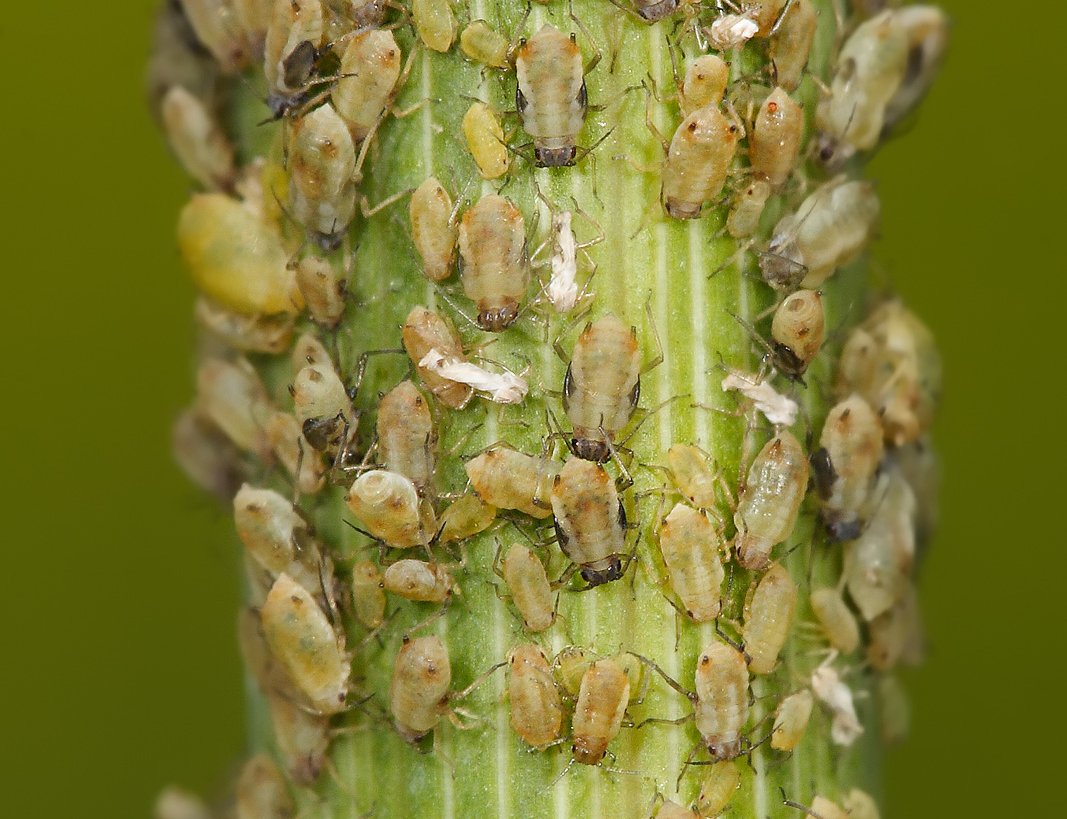This week, researchers in Japan have shown that the colour of pea aphids can be changed by bacteria living inside them.
The reason this is such an interesting discovery is that colour is a really important aspect of an animal's life. It can influence predators, prey and potential mates.
The team, led by Tsutomu Tsuchida studied these pea aphids, which are from France, and are found in both red and green morphs in the wild. Red ones tend to get eaten more by ladybirds, but the green ones tend to be attacked by parasitoid wasps. So when the team were looking at the wild populations, they noticed that some of the green aphids were having red offspring, but that the red offspring gradually became green as they aged. They wondered what might be causing the colour change, so took a closer look at the aphids and found several different types of endosymbiotic bacteria were living in them.
 An endosymbiont is an organism that lives inside another organism, but the interaction between them benefits both parties - it has to, otherwise it would be considered to be a parasite or an infection. One example would be corals - they have tiny algae living within their cells that photosynthesise - the corals gain energy from their symbionts, and the algae have ready access to nutrients and safety from predators.
An endosymbiont is an organism that lives inside another organism, but the interaction between them benefits both parties - it has to, otherwise it would be considered to be a parasite or an infection. One example would be corals - they have tiny algae living within their cells that photosynthesise - the corals gain energy from their symbionts, and the algae have ready access to nutrients and safety from predators.
So, to find out if the endosymbiotic bacteria in the aphids were involved in the colour changing, the team treated groups of aphids with antibiotics to knock out some of the bacteria. And in a second experiment they injected uninfected aphids with haemolymph, which is essentially like the blood, from infected aphids.
They found that one of the groups of bacteria, called Rickettsiella, was responsible for the colour change.When the other bacteria were killed off using antibiotics, the aphids' colour still changed if Rickettsiella was present, and when it was injected into uninfected red aphids, it caused their red offspring to become green as they aged. When the red aphids produced their sex cells, the bacteria hitched a ride in those cells and were then present in the offspring, making them change colour.The group suggested that this colour change may protect them from predation by ladybirds, but that Rickettsiella is also usually found with two other symbiont infections that help protect against the parasitoid wasps, so helping to offset the danger there of being green.
So it's an example of some of the really complex relationships that there are between insects and bacteria. I mean these ones do convey an advantage by being involved in changing the colour of the aphids, but there are some that are even more bizarre, like Wolbachia, which can cause sex changes, kill off all the males in a brood of insect babies and is estimated to infect up to 70% of all insect species.










Comments
Add a comment